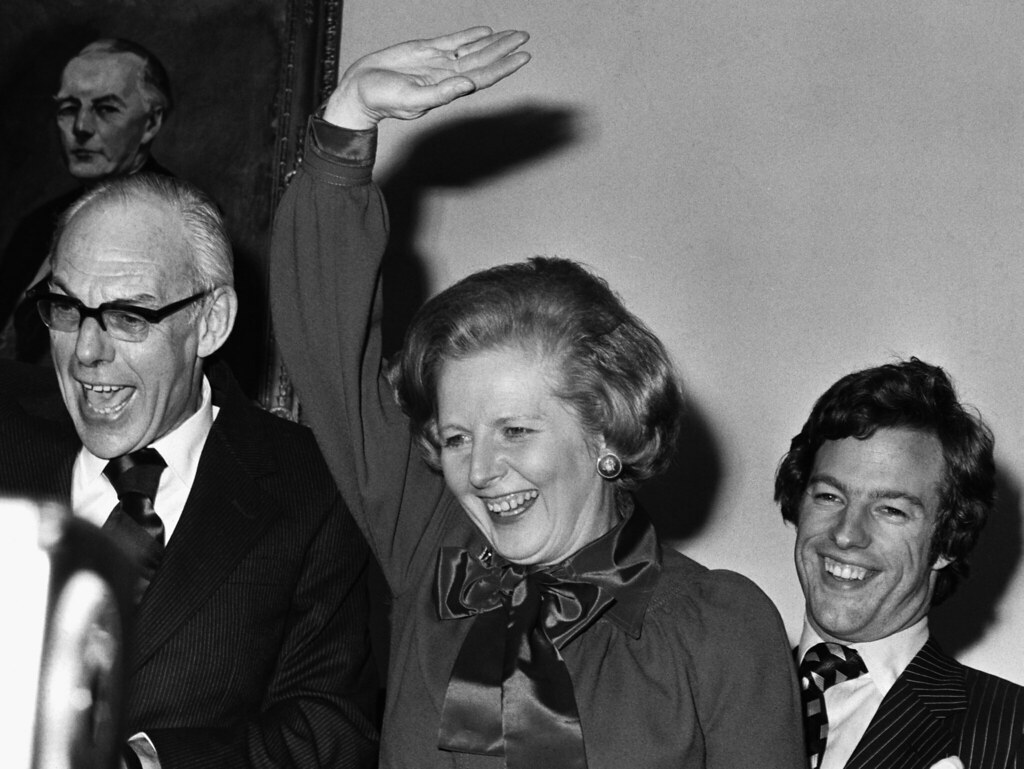Thatcher’s Britain – Reform, ruin, or both?
Margaret Thatcher was Britain’s longest-serving Prime Minister in the modern era, from 1979 until 1990, and one whose legacy is most fiercely contested. Was she a defiant visionary who pulled Britain out of a trough and into the modern world, or a dogmatic ideologue intent on forcing her diagnosis and prescriptions onto the British economy regardless of the costs? 45 years after she left office, we are still asking if we are living in Thatcher’s Britain.
To understand the changes that Thatcherite economics made to Britain, we first need to understand the economy she inherited when she arrived at 10 Downing Street on May 4, 1979. Since the Second World War ended in 1945 and the UK elected its first Labour majority government, a kind of ‘post-war consensus’ had developed around economic policy, with general acceptance of a significantly greater level of government intervention to manage the economy in the interests of all. By the late 1970s, this consensus was coming under criticism in light of its failure to deal with inflation and industrial unrest. Thatcher believed she had the solutions.
Total revenues generated from privatisation were estimated at £34 billion
Perhaps Thatcher’s most significant (and controversial) policy was privatisation. Only a minor part of the 1979 election manifesto, privatisations began slowly with British Aerospace (BAe) in 1981, but this was a substantial first step. Then Energy Secretary and later Chancellor Nigel Lawson epitomised the change in the Conservative Party and the wider country’s attitude when he stated, “No industry should remain under state ownership unless there is a positive and overwhelming case for it doing so.” The stage was then set for the wave of privatisations after the 1983 election, from the record-breaking British Telecom (largest public offering) and British Gas (largest equity offering at £5.6 billion), to all other corners of the economy, including water companies, British Steel and British Airways. Total revenues generated from selling off these assets were estimated at £34 billion, which allowed the government to cut taxes and pay off some of the national debt.
However, these public assets could only be sold once, and the question arises whether tax cuts for one generation were worth the higher costs of privatisation for their descendants. Many campaigners blame the privatised utility companies for the deteriorating quality of what once were public services. Water companies in particular are targets of calls for renationalisation, with stark contrast between the bonuses paid to executives and the widespread illegal pollution of rivers and seas. Discontent is deep, with polling suggesting that the majority of the population supports the public ownership of industries like energy, public transport, and social care.
Whilst not technically privatisation, Thatcher’s policy of a ‘Right to Buy’ for council house tenants was certainly in the same vein. Under the Right to Buy, those renting a house from their local council were (and still are) able to purchase it at a significant discount of up to 70% of the market value. This led to rising homeownership (a key part of Thatcher’s ambition for a “property-owning democracy”) but has now come at a cost to younger generations. Many former council houses are sold on to be let out by private landlords at extortionate rents or even sold back to desperate councils, costing local authorities billions of pounds each year.
Thatcher embarked on a crusade to remove ‘red tape’, which she saw as stifling innovation in the economy
Another key area in which Thatcher left her mark was in the approach towards the regulation of Big Business. As part of her emphasis on the reduction of the size of the state, and in line with her restoration of individual liberty, Thatcher embarked on a crusade to remove ‘red tape’, which she saw as stifling innovation in the economy. The financial sector was the focus, with the ‘Big Bang’ of 1986 modernising the London Stock Exchange and financial markets. This led to London’s growth as a world financial centre and significantly contributed to the boom years from 1991 to 2008. However, the deregulation of finance is widely attributed to causing the 2008 Financial Crisis and the doldrums the British economy has found itself in since.
Thatcher’s legacy is not limited just to the policies enacted by her governments; it is built on the new economic consensus that she created and was generally sustained by governments from Major, through Blair and Cameron, and all the way to Starmer. These Prime Ministers all had different policy priorities, but the fundamentals — a desire for a smaller state with less regulation and more individual freedom — are much closer to Thatcher’s ideals than the mixed economy of the post-war era. Deregulation is a clear example of this consensus; from Blair’s “light touch regulation”, to David Cameron’s “Red Tape Challenge”, and even Rachel Reeves cutting back on regulation in an attempt to stimulate growth. And as Monday marked 100 years since her birth, Britain’s right-wing parties, the Conservatives and Reform UK, still see value in fighting over who is the true heir to her ideas.
Thatcher left her mark on Britain, changing not only the economy but the collective imagination of what the economy could and should be. And although Labour may be weakening the grip Thatcherite economics has over the country through restricting the right to buy and renationalising railways, the foundations remain strong and in 2025 we still live in Thatcher’s Britain.

Comments